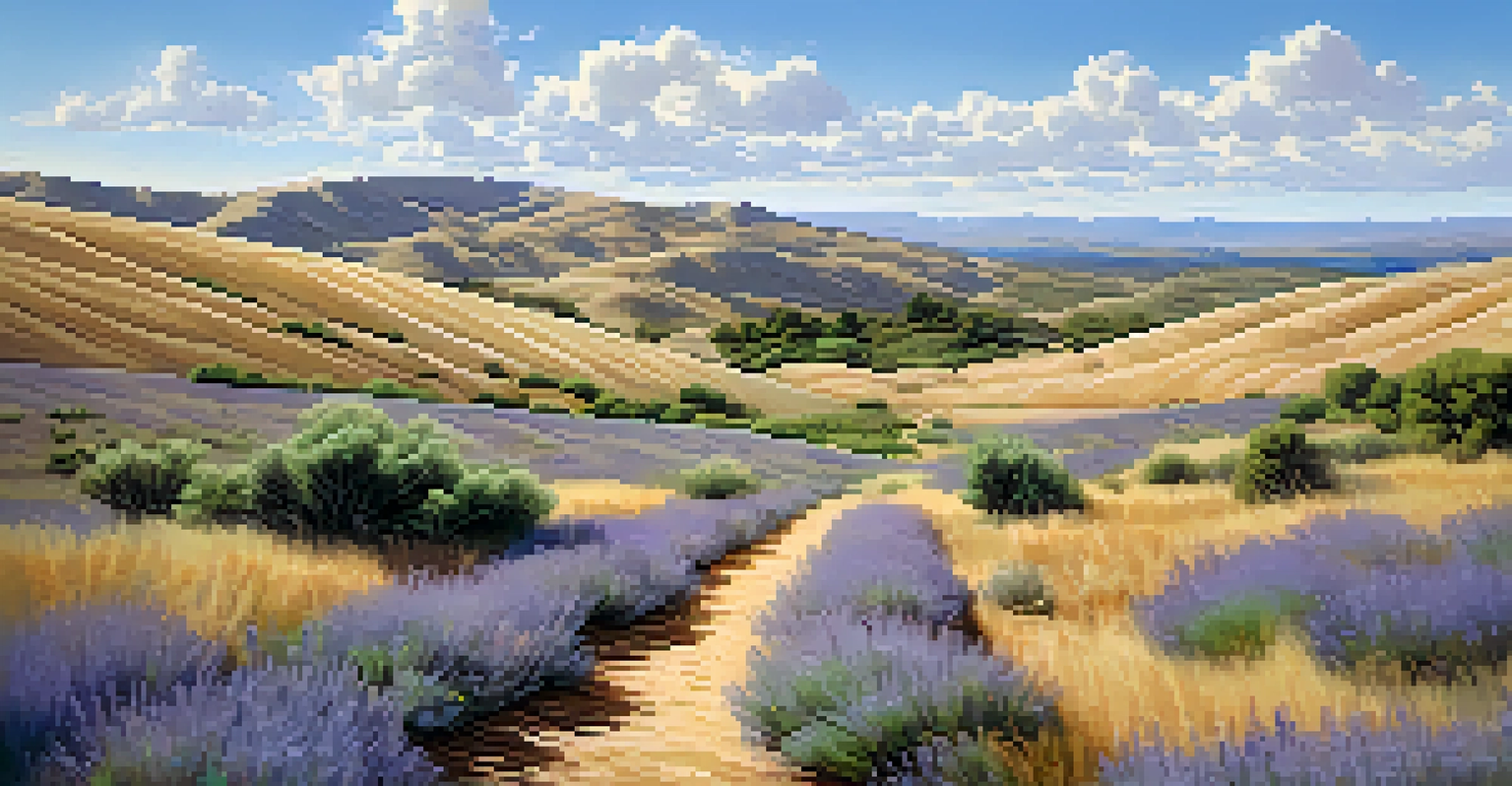Lifestyle Adjustments Due to Washington's Climate Zones

Understanding Washington's Unique Climate Zones
Washington State is known for its diverse climate zones, ranging from the rainy coast to the dry interior. This variety creates unique environments that influence the way residents live, work, and play. Whether you're in the lush, temperate rainforests of the Olympic Peninsula or the arid regions of Eastern Washington, understanding your local climate is crucial for making informed lifestyle adjustments.
The climate crisis is not a political issue, it is a moral and spiritual challenge to all of humanity. It is also our greatest opportunity to lift global consciousness to a higher level.
Each climate zone has its own set of challenges and opportunities. For instance, those living in the coastal areas must prepare for significant rainfall and mild temperatures, while residents in the eastern part of the state often deal with hotter summers and colder winters. Acknowledging these differences enables individuals to adapt their homes and daily routines accordingly.
As you consider your lifestyle in Washington, it's essential to recognize how these climate zones shape everything from gardening choices to outdoor activities. The more you understand your local environment, the better equipped you'll be to thrive in it.
Adapting Your Home for Local Weather Conditions
One of the first areas where lifestyle adjustments are necessary is in your home. For instance, in the wet, coastal regions, investing in proper drainage and waterproofing is essential to prevent mold and water damage. In contrast, homeowners in the drier eastern parts may want to focus on insulation and energy-efficient cooling systems to combat the heat.

Additionally, choosing the right materials for your home can make a significant difference. For example, using rain-resistant siding in the west can protect your home from moisture, while opting for drought-resistant landscaping in the east can save water and maintenance efforts. These decisions can enhance comfort and longevity.
Washington's Climate Zones Matter
Understanding the unique climate zones in Washington is essential for adapting lifestyle choices, gardening, and outdoor activities.
Ultimately, tailoring your home to your climate zone isn't just about comfort; it's also about sustainability. By making adjustments that align with local weather patterns, you can reduce your environmental footprint and create a more resilient living space.
Gardening Tips for Different Climate Zones
Gardening in Washington can be a rewarding experience, but it requires adaptation to the local climate. In the coastal areas, where rain is abundant, gardeners can focus on moisture-loving plants like ferns and rhododendrons. These species thrive in the rich, damp soil and can create beautiful, lush landscapes.
In every walk with nature one receives far more than he seeks.
On the other hand, residents of Eastern Washington must consider drought-resistant plants that can withstand the heat. Varieties such as lavender, sage, and native grasses not only flourish in the dry conditions but also require less water and maintenance, making them ideal choices for sustainable gardening.
Understanding your zone also helps with seasonal planting. For example, the western regions may have a longer growing season, allowing for a wider variety of crops, while the eastern areas might necessitate starting seeds indoors to ensure they mature before the first frost. Tailoring your gardening approach to your climate zone can lead to a more productive and enjoyable gardening experience.
Outdoor Activities: Embracing Seasonal Changes
Outdoor activities in Washington can vary significantly depending on which climate zone you reside in. In the western parts, activities like hiking and kayaking are popular year-round, thanks to the mild temperatures and lush scenery. However, residents need to be prepared for rain, which can often lead to muddy trails.
Conversely, those in Eastern Washington can enjoy sunny summer days perfect for biking and exploring the region’s unique landscapes. However, the harsh winters might limit outdoor activities, leading residents to embrace winter sports like skiing or snowshoeing instead. Adapting your recreational choices will enhance your enjoyment of the outdoor lifestyle.
Home Adjustments for Local Weather
Tailoring your home to suit local weather conditions enhances comfort, sustainability, and overall resilience.
Seasonal changes also dictate how you prepare for activities. For instance, layering clothing is essential in the west due to fluctuating temperatures, while sun protection is critical in the east, especially during summer. By being mindful of these variations, you can better enjoy all that Washington has to offer.
Clothing Choices Based on Climate Zones
What you wear in Washington can greatly depend on which climate zone you live in. In the wetter coastal regions, breathable, waterproof jackets and sturdy footwear are must-haves to stay comfortable during unexpected rain showers. Layering is key, as temperatures can shift throughout the day.
Meanwhile, those in Eastern Washington should opt for lightweight, breathable fabrics during the hot summer months. Sun protection becomes vital, so wide-brimmed hats and UV-blocking clothing can help shield you from the intense sun while enjoying outdoor activities. As seasons change, investing in thermal layers will be necessary for the cold winters.
Adapting your wardrobe to suit your local climate not only boosts comfort but also enhances your overall quality of life. When you're dressed appropriately for the weather, you're more likely to enjoy your time outdoors, whether it's gardening, hiking, or simply taking a stroll.
Transportation Adjustments for Weather Conditions
Transportation choices in Washington can also be influenced by the local climate. In the coastal areas, where rain and mud are common, having a reliable vehicle with good traction is essential. Many residents opt for all-wheel drive vehicles to navigate wet and slippery roads safely.
In contrast, those living in the eastern part of the state may face different challenges, like occasional snow and ice. Winter tires or chains can be necessary for safe driving during these months, highlighting the importance of seasonal vehicle adjustments. It’s all about being prepared for whatever Mother Nature throws your way.
Community Connections Enhance Living
Engaging with local resources and community events can provide support and knowledge tailored to each climate zone.
Furthermore, public transportation options may vary based on climate conditions. For instance, some areas may experience delays during heavy rain or snow, leading residents to plan their commutes accordingly. Understanding how climate impacts transportation can help you make informed decisions for your daily travels.
Health Considerations in Different Climate Zones
Living in different climate zones can impact your health in various ways. For example, those in the humid, coastal areas may struggle with allergies due to mold and pollen from the lush vegetation. It's helpful to keep windows closed during peak pollen seasons and use air purifiers to maintain indoor air quality.
In contrast, residents in the drier regions might face challenges like dehydration, especially during the hot summer months. Staying hydrated and using sunscreen are crucial for maintaining health and well-being. Recognizing these health considerations allows you to make proactive adjustments to your lifestyle.

Moreover, understanding seasonal changes can also influence your mental health. The shorter, darker days of winter in the western zones may lead some to experience seasonal affective disorder (SAD). Engaging in outdoor activities during daylight hours and utilizing light therapy can help combat these effects, promoting a healthier mindset all year long.
Community Engagement and Local Resources
Engaging with your community can be a fantastic way to adapt to the local climate. Many areas host events like farmers' markets, outdoor festivals, and seasonal activities that celebrate the unique characteristics of each climate zone. Participating in these events helps foster connections and build a sense of belonging.
Local resources, such as gardening clubs and outdoor sports groups, can provide valuable support and knowledge tailored to your climate zone. These connections can lead to friendships and shared experiences, enriching your lifestyle and helping you navigate the challenges of your environment.
Additionally, community centers often offer workshops and classes focused on sustainable living practices suitable for your climate. By tapping into these resources, you not only learn more about your local environment but also contribute to a collective effort to adapt and thrive in Washington's diverse climate zones.